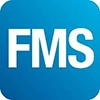Why is the food manufacturing industry not regulated in the same way as the pharmaceutical? Should high-risk food production areas be classified in the same way as cleanrooms? These are interesting questions, which provoke a variety of thoughts regarding food safety. Food manufacturing is split between low risk and high-risk production areas. Low risk meaning there is less potential for the product to cause harm; food that is stable at ambient temperatures thus not at risk from viable pathogens. Typically, high-risk areas are those where pathogens can multiply on the surface and the product.
The BRC Global Standards for Food Safety Issue 7 1 sets out the requirements for the auditing and certification of food manufacturers, equivalent to the MHRA oversees healthcare in the UK and what the FDA does for food and drugs in the US.
The difference between the two industries is that in the pharma sector the type of contamination is focussed heavily on continuous air quality sampling; if contaminants are viable, it calls for preventative measures
The food industry is very reliant on hygiene standards; it is based on risk assessment as is the pharmaceutical industry, especially with regards to contamination control: a pharma company will implement a risk-based approach to the location of particle counters in line with ISO14644-2 to demonstrate compliance; food manufacturers will demonstrate such control as mentioned in section 3.5 of the BRC Issue 7. The food company shall undertake documented risk assessments of raw materials and packaging to identify potential risks to product safety, legality and quality. This approach takes into account the potential for:
- Allergen contamination
- Foreign-body risks
- Microbiological contamination
- Chemical contamination
Contamination of raw materials is scrutinised prior to manufacturing to ensure high levels of food safety are implemented; the final product is also tested in the same way.
The BRC state the auditing should be undertaken onsite, or sub-contracted to external laboratories, and needs to include appropriate procedures, facilities and standards. It also states that there should be a scheduled programme of testing covering products and the processing environment, which may include microbiological, chemical, physical and organoleptic testing according to risk.2
The standard in its basic form outlines that the test “may” include microbiological testing but not “has to” include it. The difference between the two industries is that in the pharma sector the type of contamination is focussed heavily on continuous air quality sampling; if contaminants are viable, it calls for preventative measures.
In the food sector, the practice is a random sampling of products to check if a batch might have been contaminated; it calls for reactive measures. Should the food sector adopt a preventative approach to contamination from airborne sources?
To mitigate airborne contamination, all food manufacturing and processing facilities require efficient air filtration, and effective extraction and ventilation. Air filtration and ventilation help reduce the level of airborne contaminants.
In the food sector, the practice is a random sampling of products to check if a batch might have been contaminated; it calls for reactive measures. Should the food sector adopt a preventative approach to contamination from airborne sources?
Today, there is not a standard that requires a food manufacturing site to monitor the airborne contaminants continuously. Food hygiene and assessments for contamination forms part of a food manufacturer’s HACCP (hazard analysis and critical control points) to manage microbiological contamination effectively. Food processing companies will often use external companies to aid compliance as part of the audit process, all of which can help identify areas of increased risk of contamination.
The BRC also recommends protective clothing should be worn to prevent contamination in the same fashion as in the pharma industry to help reduce risks of contamination brought in by people; the greatest source of contamination in any facility.3 These “containment” precautions related to contamination from the operators are standard practice in pharmaceutical production facilities.
The biggest issue is where to start, which process gets regulated first, and who is going to write the guidelines? Some food manufacturing facilities produce powders and ingredients and therefore have many parameters that would require monitoring (temperature, humidity, air quality, pressure, O2 depletion, etc.) and in some cases do. However, this is a “go with the flow” process in regards to what is acceptable, what is safe and what is not: guidelines and standards don’t exist.
Today, the focus for the reduction of contamination risks in a food environment is on cleaning and hygiene, which helps the preventative approach to contamination alongside airflow, filtration and extraction systems. These are identical procedures to a pharmaceutical manufacturing facility, but with one difference: in pharma, the level of contamination control is continued beyond sterilisation using airborne particle counters throughout the manufacturing process. So, why not use particle counters in the food industry?
References:
- BRC Global Standards Global Standard Food Safety Issue 7
- 1. 3.5 Supplier and raw material approval and performance monitoring - Sub section 3.5.1.1
- 2. 5.6 Product inspection and laboratory testing - Sub section 5.6.1.1.
- 7.4 Protective Clothing: Employees or visitors to production areas - Sub section 7.4.2
Editor's note: This article will be featured in the September issue.





